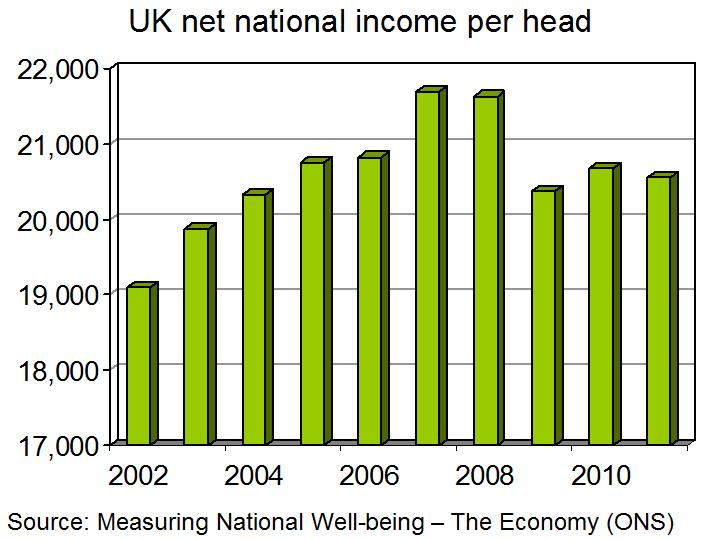 This is the second of three blogs looking at high inflation and its implications. Here we look at changes in the housing market and its effects on households. Another way of analysing the financial importance of the housing and mortgage markets is through the balance sheets and associated flow accounts of the household sector.
This is the second of three blogs looking at high inflation and its implications. Here we look at changes in the housing market and its effects on households. Another way of analysing the financial importance of the housing and mortgage markets is through the balance sheets and associated flow accounts of the household sector.
We used the concept of balance sheets in our blog Bank failures and the importance of balance sheets. In the blog we referred to the balance-sheet effects from interest rate hikes on the financial well-being of financial institutions.
The analysis is analogous for households. Again, we can identify two general effects: rising borrowing and debt-servicing costs, and easing asset prices.
The following table shows the summary balance sheet of the UK household sector in 1995 and 2021.

Source: National balance sheet estimates for the UK: 1995 to 2021 (January 2023) and series RPHA, ONS
The total value of the sector’s net wealth (or ‘worth’) is the sum of its net financial wealth and its non-financial assets. The former is affected by the value of the stock of outstanding mortgages, which we can see from row 3 in the table (‘loans secured on dwellings’) has increased from £390 billion in 1995 to £1.56 trillion in 2021. This is equivalent to an increase from 70 to 107 per cent of the sector’s annual disposable income. This increase helps to understand the sensitivity of the sector’s financial position to interest rate increases and the sizeable cash flow effects. These effects then have implications for the sector’s spending.
 Housing is also an important asset on household balance sheets. The price of housing reflects both the value of dwellings and the land on which they sit, and these are recorded separately on the balance sheets. Their combined balance sheet value increased from £1.09 trillion (£467.69bn + £621.49bn) in 1995 to £6.38 trillion (£1529.87bn + £4853.16bn) in 2021 or from 128% of GDP to 281%.
Housing is also an important asset on household balance sheets. The price of housing reflects both the value of dwellings and the land on which they sit, and these are recorded separately on the balance sheets. Their combined balance sheet value increased from £1.09 trillion (£467.69bn + £621.49bn) in 1995 to £6.38 trillion (£1529.87bn + £4853.16bn) in 2021 or from 128% of GDP to 281%.
The era of low inflation and low interest rates that had characterised the previous two decades or so had helped to boost house price growth and thus the value of non-financial assets on the balance sheets. In turn, this had helped to boost net worth, which increased from £2.78 trillion in 1995 to £12.29 trillion in 2021 or from 319% of GDP to 541%.
Higher interest rates and wealth
 The advent of higher interest rates was expected not only to impact on the debt servicing costs of households but the value of assets, including, in the context of this blog, housing. As Chart 3 in the previous blog helped to show, higher interest rates and higher mortgage repayments contributed to an easing of house price growth as housing demand eased. On the other hand, the impact on mortgaged landlords helped fuel the growth of rental prices as they passed on their increased mortgage repayment costs to tenants.
The advent of higher interest rates was expected not only to impact on the debt servicing costs of households but the value of assets, including, in the context of this blog, housing. As Chart 3 in the previous blog helped to show, higher interest rates and higher mortgage repayments contributed to an easing of house price growth as housing demand eased. On the other hand, the impact on mortgaged landlords helped fuel the growth of rental prices as they passed on their increased mortgage repayment costs to tenants.
Higher interest rates not only affect the value of housing but financial assets such as corporate and government bonds whose prices are inversely related to interest rates. Research published by the Resolution Foundation in July 2023 estimates that these effects are likely to have contributed to a fall in the household wealth from early 2021 to early 2023 by as much as £2.1 trillion.
The important point here is that further downward pressure on asset prices is expected as they adjust to higher interest rates. This and the impact of higher debt servicing costs will therefore continue to impact adversely on general financial well-being with negative implications for the wider macroeconomic environment.
Articles
- The Mortgage Crunch
Resolution Foundation, Simon Pittaway (17/6/23)
- Peaked Interest?
Resolution Foundation, Molly Broome, Ian Mulheirn and Simon Pittaway (17/7/23)
- UK inflation to fall to lowest level since March 2022 but Bank of England still tipped to hike interest rates
City A.M., Jack Barnett (17/7/23)
- Mortgage payments set to jump by £500 for one million households
BBC News, Tom Espiner (13/7/23)
- Interest rates: Big rise less likely after inflation surprise
BBC News, Daniel Thomas, Faisal Islam & Dharshini David (19/7/23)
- Rising Mortgage Costs. What Can Be Done?
NIESR blog, Max Mosley and Adrian Pabst (17/7/23)
- UK interest rates forecast to rise less sharply after inflation falls to 7.9%
The Guardian, Richard Partington (19/7/23)
- Mortgage costs: More Scots falling behind on repayments
Herald Scotland, Kristy Dorsey (18/7/23)
Report
Data
Questions
- What possible indicators could be used to assess the affordability of residential house prices?
- What do you understand by the concept of the monetary policy transmission mechanism? How do the housing and mortgage markets relate to this concept?
- What factors might affect the proportion of people taking out fixed-rate mortgages rather than variable-rate mortgages?
- What is captured by the concept of net worth? Discuss how the housing and mortgage markets affect the household sector’s net worth.
- What are cash-flow effects? How do rising interest rates effect savers and borrowers?
- How might wealth effects from rising interest rates impact younger and older people differently?
- Discuss the ways by which house price changes could affect household consumption.
 Although every recession is different (for example in terms of length and magnitude), they do tend to have a few things in common. The focus of this blog is on consumer income and how it is affected in the aftermath of (or even during) a recession. According to data from the ONS, real national income per head has fallen by more than 13% since the start of 2008.
Although every recession is different (for example in terms of length and magnitude), they do tend to have a few things in common. The focus of this blog is on consumer income and how it is affected in the aftermath of (or even during) a recession. According to data from the ONS, real national income per head has fallen by more than 13% since the start of 2008.
This latest data from the Office of National Statistics shows that in the aftermath of the 2008 recession, UK incomes have fallen by much more than they did in the 2 previous recessions experienced in the UK (click here for a PowerPoint of the chart). We would normally expect consumer incomes to fall during and possibly directly after a recession, as national output falls and confidence tends to be and remain low. However, the crucial thing to consider with falling consumer incomes is how it affects purchasing power. If my income is cut by 50%, but prices fall by 80%, then I’m actually better off in terms of my purchasing power.

The data from the ONS is all about purchasing power and shows how UK consumer incomes have fallen at the same time as inflation having been relatively high. It is the combination of these two variables that has been ‘eating into the value of the cash that people were earning’. Comparing the incomes in the four years after the 2008 recession with similar periods following the early 1980s and 1990s recession, the ONS has shown that this most recent recession had a much larger effect on consumer well-being. Part of this may be due to the rapid growth in incomes prior to the start of the credit crunch.
It’s not just the working population that has seen their incomes fall since 2008 – the retired population has also seen a decline in income and according to a report from the Institute for Fiscal Studies, it is the wealthiest portion of older households that have taken the largest hit since 2007. According to the IFS, the average person over 50 has experienced a fall in their gross wealth of about 10%, or close to £60,000. Of course for these older households, the concern is whether they will be able to make up this lost wealth before they retire. The concern for everyone is how long until incomes and purchasing power increase back to pre-crisis levels. The following articles consider this latest data on economic well-being and the impact the recession has had.
UK wellbeing still below financial crisis levels Guardian, Larry Elliott and Randeep Ramesh (23/10/12)
National income per head ‘down 13% in four years’ BBC Newsd (23/10/12)
Financial crisis hits UK retirement income Financial Times, Norma Cohen (23/10/12)
Over 50s ‘left £160,000 out of pocket by the financial crisis’ The Telegraph, James Kirkup (23/10/12)
Those near retirement in UK hit hard by crisis Wall Street Journal, Paul Hannon (23/10/12)
Living standards down 13pc since start of recession The Telegraph (23/10/12)
Questions
- Why is net national income per head said to be the best measure of economic well-being?
- Why is it so important to take into account inflation when measuring wellbeing?
- What explanation can be given for the larger fall in consumer incomes following the 2008 recession relative to the previous 2 recessions?
- According to data from the IFS, the richest portion of older households have suffered the most in terms of lost wealth. Why is this the case?
- What is meant by purchasing power?
- GDP has fallen by about 7%, whereas national income per head, taking inflation into account is down by over 13%. What is the explanation for these 2 different figures?
- How can recessions differ from each other? Think about the length, the magnitude of each.
- Is GDP a good measure of economic well-being? Are there any other ways we can measure it?
It looks like being a busy time for economic commentators for many, many months as they keep an eye on how the economy is progressing in light of the squeeze in public spending and impending tax increases. Inevitably these commentators – including us here on the Sloman News Site – will be watching to see how the private sector responds and whether or not, as is hoped, private sector activity will begin filling the void left by the public sector.
Of course, the largest group of purchasers in the economy is the household sector. So, in the short term at least, they will be crucial in supporting the total level of aggregate demand. The effects of any rebalancing of aggregate demand as the public sector’s role is reduced will be more painful should the real growth in household spending slow or even go into reverse. As consumers we are well aware that our spending depends on more than just our current income. For instance, it is affected by our expectations of our future incomes and by our general financial position. In essence the latter reflects our holdings of financial assets and liabilities (debt) and any wealth we may be lucky enough to hold in valuables such as housing.
So, do we have any clues as to how the financial position of households might be impacting on our spending? Well, the latest numbers from the Bank of England on Housing Equity Withdrawal (HEW) offer us an important insight in to the extent of the fragility felt by households as to their financial position. These numbers show that households increased their stake in housing by some £6.2 billion in the second quarter of 2010. At least two questions probably spring to mind at this point! Firstly, what is HEW and, secondly, what has this got to do with spending?
Let’s begin by defining Housing equity withdrawal (HEW). HEW occurs when new lending secured on dwellings (net lending) increases by more than the investment in the housing stock. Housing investment relates largely to the purchase of brand new homes and to major home improvements, but also includes house moving costs, such as legal fees. When HEW is negative, new secured lending is less than the level of housing investment. In other words, given the level of investment in housing, we would have expected new mortgage debt to have been greater. This means that households are increasing their housing equity.
This brings us to answering our second question – the ‘so what question’. As with all the choices we make, there is an opportunity cost – a sacrifice. By increasing our equity in property and using housing as a vehicle for saving we are using money that cannot be used to fund current consumption or to purchase financial assets.
As we have already noted, the Housing Equity Withdrawal (HEW) figures for Q2 2010 show that households increased their stake in housing by some £6.2 billion. This is equivalent to a little over 2½% of disposable income in the period and income that, as we have also said, could have helped to boost aggregate demand through spending. And, there is another concern for those hoping that households will help support aggregate demand in the short term: negative HEW is not new. In fact, HEW has been negative since the second quarter of 2008, the exact same quarter that the UK entered recession. The magnitude of negative HEW over these past 9 quarters is equivalent to £44.2 billion or 2.1% of disposable income.
Of course, these latest HEW figures are figures from the past. What we are ultimately interested in, of course, is future behaviour. But, it might be that the prolonged period over which British households have been consolidating their own financial position – just as the public sector is looking to do – suggests that households are in cautious mood. So the question for you to debate is how cautious you think the household sector will remain and, therefore, how much households will help support aggregate demand in the months ahead.
Articles
Mortgage equity still increasing, Bank of England says BBC News (1/10/10)
Homeowners pay down loans Independent (2/10/10)
Paying off mortgages is a priority Telegraph, Philip Aldrick (3/10/10)
Homeowners pay off £6.2 billion in mortgage debt Guardian, Phillip Inman (1/10/10)
Families pay off £6bn mortgages Express, Sarah O’Grady (2/10/10)
Data
Housing equity withdrawal (HEW) statistical releases Bank of England
Questions
- What do you understand by aggregate demand? And what do you think a ‘rebalancing’ of aggregate demand might refer to?
- What do you understand by the term housing equity withdrawal?
- What is the opportunity cost of positive housing equity withdrawal (HEW)? What about the opportunity cost of negative HEW?
- What factors might help to explain the nine consecutive quarters of negative HEW?
- List those items that you might included under: (i) household financial assets; (ii) household financial liabilities; and (iii) household physical assets. Using this information, how would you calculate the net worth of a household?
- Let’s think about the spending of households. Draw up a list of factors that you think would affect a household’s current spending plans. Given your list, what conclusion would you draw about the strength of household spending in the months ahead?
Research from the Halifax estimates that the total wealth of UK households at the end of 2009 was £6.316 trillion. Putting this into context, it means that the average UK household has a stock of wealth of £236,998. In real terms, so stripping out the effects of consumer price inflation, the total wealth of households has grown five-fold since 1959 while the average wealth per household has grown three-fold while. The growth in wealth per household is a little less because of the increase in the number of households from 6.6 million to 26.6 million. For those that like their numbers, total household wealth in 1959 was estimated at £1.251 trillion (at 2009 prices) while the average amount per household was £72,719 (at 2009 prices).
But, do changes in household wealth matter? Well, yes, but not necessarily in a consistent and predictable manner. That’s why so many of us love economics! For now, consider the prices of two possible types of assets: share prices and house prices. The prices of both these assets are notoriously volatile and it is this volatility that has the potential to affect the growth of consumer spending.
It might be, for instance, that you are someone who keeps a keen eye on the FTSE-100 because you use shares as a vehicle for saving. A fall in share prices, by reducing the value of the stock of financial assets, may make some people less inclined to spend. Housing too can be used as a vehicle for saving. Changes in house prices will, of course, affect the capital that can be realised from selling property, but also affect the collateral that can be used to support additional borrowing and, more generally, affect how wealthy or secure we feel.
The Halifax estimates that the household sector’s stock of housing wealth was £3.755 trillion at the end of 2009 while its stock of financial assets (such as savings, pensions and shares) was £4.024 trillion. In real terms, housing wealth has grown on average by 5% per year since 1959 while financial assets have grown by 2.8% per year. Of course, while households can have financial and housing assets they are likely to have financial liabilities too! We would expect households’ exposure to these liabilities – and their perception of this exposure – to offer another mechanism by which household spending could be affected. For instance, changes in interest rates impact on variable rate mortgages rates, affecting the costs of servicing debt and, in turn, disposable incomes.
The Halifax reports that the stock of mortgage loans was £1.235 trillion at the end of 2009, which, when subtracted from residential housing wealth, means that the UK household sector had net housing equity of £2.519 trillion. It estimates that the stock of mortgage loans has increased on average by 6.5% per year in real terms since 1959 while net housing equity has grown by 4.5%. The stock of households’ unsecured debt, also known as consumer credit, was £227 billon at the end of 2009. In real terms it has grown by 5.3% per year since 1959.
The recent patterns in household wealth are particularly interesting. Between 2007 and 2008 downward trends in share prices and house prices contributed to a 15% real fall in household wealth. The Halifax note that some of this was ‘recouped’ in 2009 as a result of a rebound in both share prices and house prices. More precisely, household wealth increased by 9% in real terms in 2009, but, nonetheless, was still 8% below its 2007 peak.
Given the recent patterns in household wealth, including the volatility in the components that go to comprise this stock of wealth, we shouldn’t be overly surprised by the 3.2% real fall that occurred in household spending last year. Further, we must not forget that 2009 was also the year, amongst other things, that the economy shrunk by 4.9%, that unemployment rose from 1.8 million to 2.5 million and that growing concerns about the size of the government’s deficit highlighted the need for fiscal consolidation at some point in the future. All of these ingredients created a sense of uncertainty. This is an uncertainty that probably remains today and that is likely to continue to moderate consumer spending in 2010. So, it’s unlikely to be a time for care-free shopping, more a time for window shopping!
Halifax Press Release
UK household wealth increases five-fold in the past 50 years Halifax (part of the Lloyds Banking Group) (15/5/10)
Articles
Household wealth ‘up five-fold’ UK Press Association (15/5/10)
We’ve never had it so good: Families five times richer than in 1959 Daily Mail, Steve Doughty (15/5/10)
Household wealth grows five-fold in past 50 years BBC News (16/5/10)
Average household wealth jumps £150,000 Telegraph, Myra Butterworth (15/5/10)
Questions
- Draw up a list of the ways in which you think consumer spending may be affected by: (i) the stock of household wealth; and (ii) the composition of household wealth.
- What factors do you think lie behind the annual 5% real term increase in the value of residential properties since 1959?.
- How might the sensitivity of consumer spending to changes in interest rates be affected by the types of mortgage product available?
- Why do you think consumer spending fell by 3.2% in real terms in 2009 despite real disposable income increasing by 3.2%?
- What would you predict for consumption growth in 2010? Explain your answer.
 This is the second of three blogs looking at high inflation and its implications. Here we look at changes in the housing market and its effects on households. Another way of analysing the financial importance of the housing and mortgage markets is through the balance sheets and associated flow accounts of the household sector.
This is the second of three blogs looking at high inflation and its implications. Here we look at changes in the housing market and its effects on households. Another way of analysing the financial importance of the housing and mortgage markets is through the balance sheets and associated flow accounts of the household sector. 
 Housing is also an important asset on household balance sheets. The price of housing reflects both the value of dwellings and the land on which they sit, and these are recorded separately on the balance sheets. Their combined balance sheet value increased from £1.09 trillion (£467.69bn + £621.49bn) in 1995 to £6.38 trillion (£1529.87bn + £4853.16bn) in 2021 or from 128% of GDP to 281%.
Housing is also an important asset on household balance sheets. The price of housing reflects both the value of dwellings and the land on which they sit, and these are recorded separately on the balance sheets. Their combined balance sheet value increased from £1.09 trillion (£467.69bn + £621.49bn) in 1995 to £6.38 trillion (£1529.87bn + £4853.16bn) in 2021 or from 128% of GDP to 281%. The advent of higher interest rates was expected not only to impact on the debt servicing costs of households but the value of assets, including, in the context of this blog, housing. As Chart 3 in the previous blog helped to show, higher interest rates and higher mortgage repayments contributed to an easing of house price growth as housing demand eased. On the other hand, the impact on mortgaged landlords helped fuel the growth of rental prices as they passed on their increased mortgage repayment costs to tenants.
The advent of higher interest rates was expected not only to impact on the debt servicing costs of households but the value of assets, including, in the context of this blog, housing. As Chart 3 in the previous blog helped to show, higher interest rates and higher mortgage repayments contributed to an easing of house price growth as housing demand eased. On the other hand, the impact on mortgaged landlords helped fuel the growth of rental prices as they passed on their increased mortgage repayment costs to tenants.
